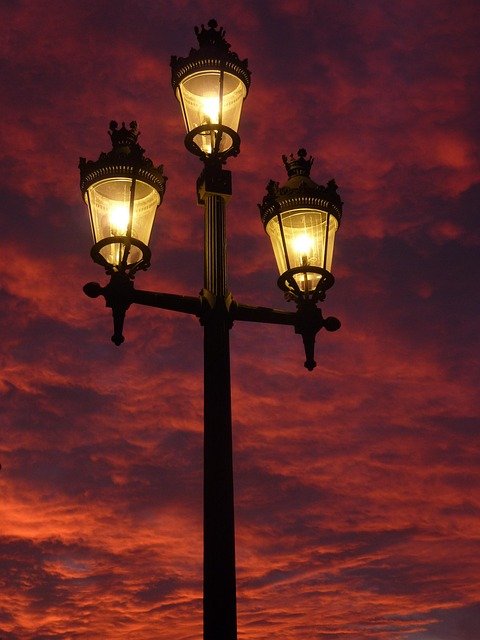По мере того, как интеллектуальное освещение становится все более интеллектуальным, фотоэлементные датчики, также известный под названиями «от заката до рассвета» или фотоэлектрические датчики, по праву можно назвать невоспетыми героями в энергосберегающих светодиодных уличных системах освещения. Они не только помогают экономить электроэнергию, но и повышают удобство эксплуатации.
Если вам нужно наружное освещение для оживленных автомагистралей, промышленных помещений, озеленения вашего газона, парков, улиц муниципалитетов или парковок, они являются одними из самых надежных решений. Знакомство с принципом работы этих устройств может помочь вам построить более долговечную и экономичную инфраструктуру освещения и получить от нее максимальную отдачу.
Эти компактные, но мощные устройства определяют, насколько сильным или слабым является окружающее освещение, и автоматически управляют наружным освещением, гарантируя, что оно будет включено только тогда, когда это необходимо. Таким образом, они не только сокращают потребление энергии, но и повышают общественную безопасность, обеспечивая постоянный свет, как только начинает темнеть. Учитывая их важность, давайте рассмотрим, как на самом деле работают эти устройства и что отличает датчики освещенности Lead-Top от остальных.
Принцип работы фотоэлементного датчика
А фотоэлемент небольшой переключатель, который определяет уровень наружного освещения. На основе установленного порога для минимального и максимального наружного освещения эти переключатели автоматически включают и выключают уличное освещение по мере необходимости, без какого-либо ручного вмешательства.
Пошаговый процесс:
- Обнаружение света:
В основе датчика лежит CdS (сульфид кадмия) клетка или ИК фототранзистор. Эти компоненты чувствительны к изменениям интенсивности света- В условиях яркого освещения, элемент CdS имеет низкое сопротивление, что позволяет электрическому току легко проходить
- При слабом освещении или в темноте сопротивление значительно возрастает, нарушая цепь и сигнализируя о необходимости активации подключенной осветительной нагрузки.
- Обработка сигнала:
Реакция датчика на изменение уровня освещенности обрабатывается внутренним реле или твердотельной коммутационной схемой. Эта часть фотоэлемента интерпретирует электрический сигнал и определяет, когда замыкать или размыкать цепь освещения. - Контроль нагрузки:
- При обнаружении темноты уровень освещенности падает ниже порогового значения около 10–16 люкс. Цепь замыкается, и питание подается на осветительный прибор, включая его.
- Цепь размыкается при обнаружении достаточного окружающего освещения (выше 65–80 люкс), выключая свет.
Этот полностью автоматизированный механизм сокращает ручной контроль, потери энергии и сложность системы.
Основные характеристики фотоэлементов Lead-Top
Lead-Top's Модели интеллектуальных фотоэлементов созданы для точности, долговечности и интеллектуального управления. Наша линейка продукции включает:
| Модель | Тип | Диапазон напряжения | Основные характеристики |
| LT124 | Поворотный замок | 120–277В | Экономически эффективная конструкция начального уровня с задержкой 2–5 с |
| LT134 | Длительный срок службы | 120–277В | Защита от перенапряжения (до 20 кВ), обнаружение перехода через ноль |
| ЛТ154 | Тяжелый | 120–277В | Поддержка высокого пускового тока, реле 30 А, гарантия 10 лет |
| LT154E | Высоковольтный | 347–480В | Программируемые функции, производительность промышленного уровня |
Стандартные шаги:
- Порог включения: 10–16 Люкс
- Порог выключения: 65–80 Люкс
- Задержка времени: 3–10 секунд, чтобы избежать неправильной подсказки
- Защита от проникновения: IP66/IP67, устойчив к воде и загрязняющим веществам окружающей среды
- Режим отказа ВКЛ.: Состояние индикатора по умолчанию ВКЛ в случае внутреннего сбоя
- Обнаружение перехода через нуль: Минимизирует электрическую нагрузку на цепь во время переключения питания
В практическом применении фотоэлементы подключаются напрямую к осветительным приборам или к контакторам и панелям управления для централизованного управления несколькими осветительными приборами. Типичный трехпроводной фотоэлемент подключается следующим образом:
- Красный провод → Нагрузка (например, светодиод)
- Черный провод → Линия (питание)
- Белый провод → Нейтральный.
Почему стоит выбрать фотоэлементы Lead-Top?
Компания Lead-Top, базирующаяся в Вэньчжоу, Китай, является сертифицированным производителем с более чем 20-летним опытом производства. Компания Lead-Top стала надежным поставщиком для правительств, производителей оригинального оборудования и подрядчиков по освещению по всему миру.

Когда речь идет о надежной автоматизации наружного освещения, выбор надежного производителя так же важен, как и выбор правильных характеристик датчика. Основные преимущества включают в себя:
- Индивидуальный дизайн: ноль МЗ для индивидуального логотипа, оболочки, напряжения, цвета крышки
- Быстрый оборот: Мы можем доставить 500–1000 единиц в течение семи дней.
- Полный Сертификаты: UL773, CE, CB, ANSI C136.10, Книга Жаги 18
- Гарантия качества напрямую от завода-изготовителя: Каждое устройство проходит строгие испытания на устойчивость к перепадам давления и воздействию соли.
- Глобальное присутствие: Ежегодно отгружается более 5 миллионов единиц продукции.
Эти интеллектуальные фотоэлементные датчики способны работать наилучшим образом даже в суровых и суровых условиях. Будь то палящая жара, мороз, дождь, снег или высокая концентрация соли вблизи прибрежных зон, вы получаете постоянную производительность без перерывов.
Идеальное применение
Фотоэлементные датчики в настоящее время широко используются в различных системах освещения, в том числе:
- Освещение автомагистралей и туннелей: Автоматически освещает дороги для безопасности в ночное время, когда освещенность падает ниже определенного уровня.
- Столбы для парковки: Убедитесь, что парковочные места освещаются только при необходимости и автоматически выключаются, когда они не нужны.
- Освещение рекламных щитов и вывесок: Улучшите видимость рекламных вывесок после наступления темноты, включив их автоматическую подсветку.
- Системы солнечного освещения: Эффективное управление устройствами на солнечных батареях в зависимости от наличия солнечного света.
- Освещение рекламных щитов и вывесок: Освещение не работает в течение дня, что значительно сокращает счета за электроэнергию.
- Умный город и интегрированные системы освещения с использованием Интернета вещей: Поддержание безопасности и видимости без ручного вмешательства.
- Светодиодные уличные фонари: Защита от перенапряжения и переключение при переходе через ноль.
Если вы пойдете на компромисс с качеством или выберете более дешевую или несертифицированную продукцию, у вас могут возникнуть проблемы. Вот чего следует ожидать:
- Мерцающие огни: Особенно при подключении к светодиодным драйверам с низкой нагрузкой без обнаружения перехода через ноль.
- Преждевременная активация/деактивация: Вызывается ложными, временными факторами окружающей среды, такими как фары или туман.
- Частые отказы: Из-за отсутствия защиты от перенапряжения или недостаточной гидроизоляции.
- Высокие затраты на техническое обслуживание: Из-за того, что время от времени бригадам приходилось вручную заменять неисправные датчики или перепрограммировать таймеры.

Сертифицированные модели Lead-Top решают все эти проблемы, обеспечивая прочную конструкцию, точную логику срабатывания и совместимость с широким спектром светодиодных систем. Современные фотоэлементы должны делать гораздо больше, чем просто обнаруживать свет. По мере развития городской инфраструктуры ожидается, что средства управления освещением будут поддерживать удаленный доступ, обмен данными и адаптивность.
Lead-Top предлагает фотоэлементы и аксессуары, которые поддерживают:
- Соответствие Zhaga Book 18 для модульных обновлений датчиков
- NEMA 5-контактные/7-контактные розетки для регулировки яркости и дистанционного управления
- Совместимость с беспроводными системами (например, Zigbee, NB-IoT, LoRa)
- Интеграция датчиков движения и окружающей среды
Это облегчает муниципалитетам задачу по обеспечению соответствия своей инфраструктуры требованиям завтрашнего дня и ее соответствию энергетической политике ЕС, концепциям «умных городов» и целям устойчивого развития. Фотоэлементные датчики — это не просто переключатели, это основополагающие элементы современных систем управления освещением. Их способность сочетать интеллектуальную автоматизацию и промышленную долговечность делает их незаменимыми в инфраструктуре общественного освещения.
Выбирая Lead-Top, градостроители, инженеры и производители светотехнического оборудования получают доступ к следующим передовым решениям:
- Высоконадежные датчики с надежной защитой
- Проекты, готовые к использованию в соответствии с меняющимися потребностями города
- Доступная кастомизация и соответствие мировым стандартам
Хотите интегрировать фотоэлемент с драйверами светодиодов или контакторами? Или нужна рекомендация эксперта по настройке напряжения (например, 277 В или 480 В)?
Давайте поговорим — мы поможем вам выбрать правильную модель и решение.
👉 Посетите: www.leaditop.com
📧 Электронная почта: продажи@lead-top.com
📱 WhatsApp: +86 133 9100 4727
Ссылки







